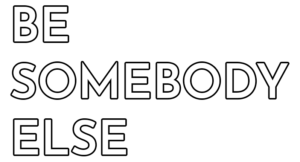 I’m not a big believer in what get called attachment styles. It’s like buying clothes from a mass-market store, on-line, without trying them on first, and without any real sense of what S, M, L, XL, or XXL might relate to. However, thinking about attachment through the lens of Panksepp’s PANIC system allows for a little more imagination. It’s more like trying something on and then being able to make adjustments before you take your clothes home.
I’m not a big believer in what get called attachment styles. It’s like buying clothes from a mass-market store, on-line, without trying them on first, and without any real sense of what S, M, L, XL, or XXL might relate to. However, thinking about attachment through the lens of Panksepp’s PANIC system allows for a little more imagination. It’s more like trying something on and then being able to make adjustments before you take your clothes home.
Thinking about PANIC and the ways in which we might find life plagued by HESITATION (or maybe you can think of your own label based on your experience?) allows you to examine the effects of mediation. The pull towards addressing PANIC can leave you and the people around you (all with their own sense of PANIC to try and deal with. Attachment understood like this has to be seen as a ‘group’ phenomenon; a process of interdependence that Nicolas Abraham and Maria Torok called the ‘Dynamics of Intersubjective Functioning)’ experiencing life with different degrees of mutual mediation.

Mediation Styles
Above are some drawings of the kind I do for my clients in sessions. The four I have shown are among the ones I most commonly find myself drawing.
In number one there’s a sense of the carer being comfortably ‘in the world’ and able to pass this sense of realism and lack of anxiety across to their child. The child receives the world mediated by someone who has a good idea of how the world operates and who manages to balance feeling getting what they need with what others need, and so on.
Number two shows a carer crushed by the world. Their child receives a sense of the world as alarming, threatening and overwhelming. ‘stick close to me at all times’, might be a message the carer implicitly passes on. Or you will PANIC. Another kind of message might be ‘Head for the hills, everybody for themself’. I come up with messages appropriate to each client. What would your message have been, do you think, and how are you still living it? How can you rewrite the script you were given?
Number three shows a child taking in confusion. Their carer can’t make sense of the world.
Number four shows a child standing between their carer and the world. That’s no fun at all. That child has to stand up to the world like an adult while their carer shelters. Sometimes the carer really needs to get their act together. Sometimes the carer needs help from a doctor or someone like that … and their child needs help from other adults so they can go on being a child while their body, their brain, their mind develop less acutely.
There are dozens of drawings like these to be made. They help show how all of the drives might be adapted to.

